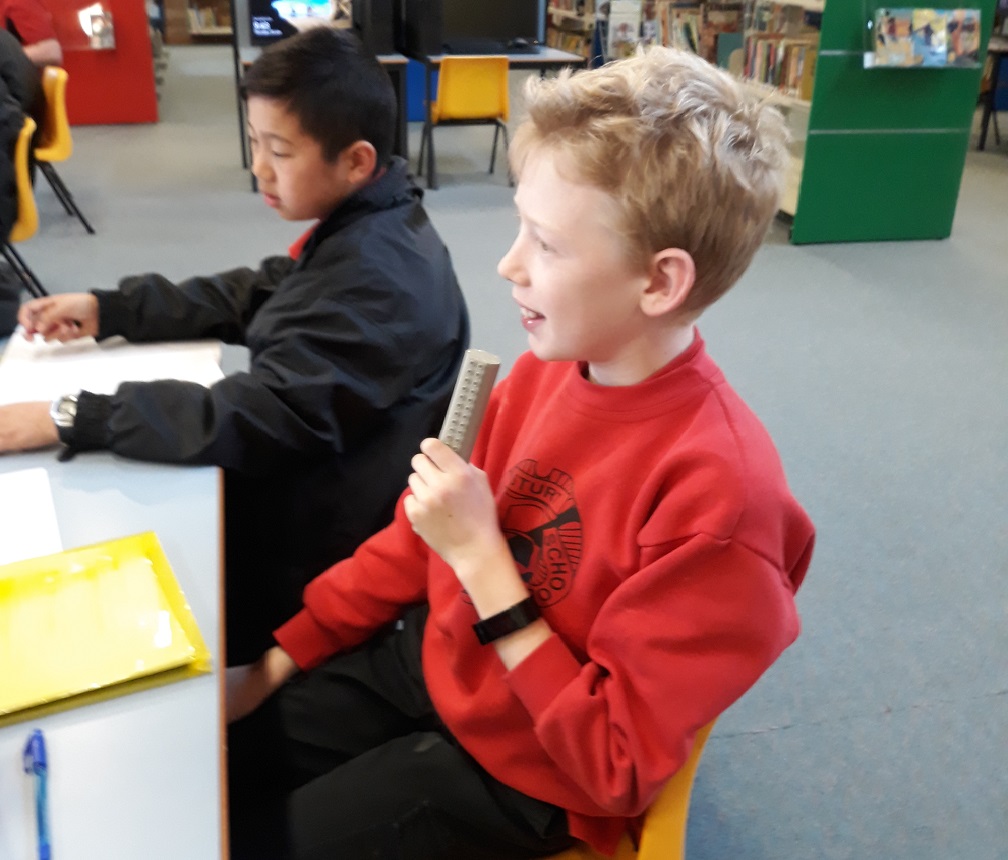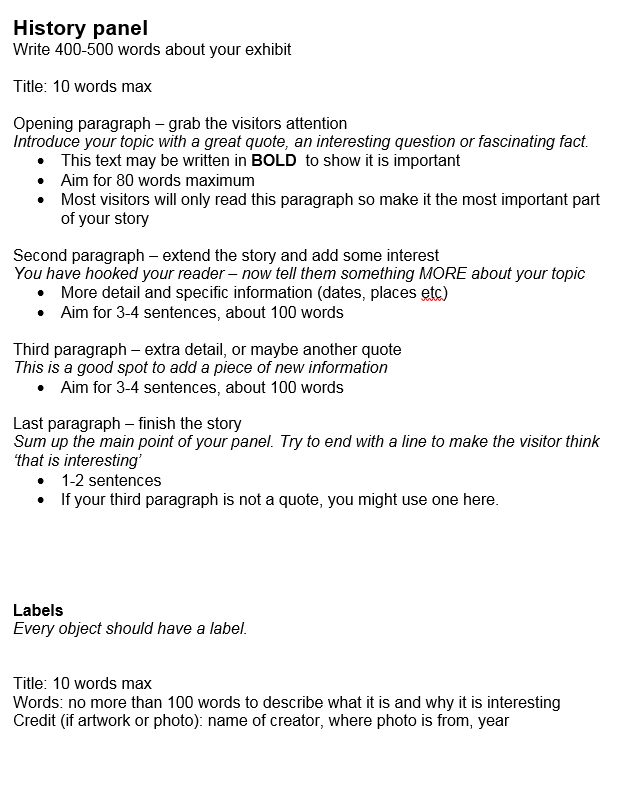Get it written
28 June 2018
Don’t get it right, get it written.
Today we focused on writing for our panels for the exhibition. Like most of our plans, things started out well, went a bit off track, but sort of came together in the end.
Every group needs to write a panel for the exhibition. The panel will provide an overview of each topic that the groups are working on. The focus for each group is a little different. And so while today was intended to focus on writing, we found that many groups became stuck on deciding what topic they would write about. In hindsight, it would have been better to spend a session on ideating about this, and a second session on writing.
To begin with, we discussed what the purpose of a panel was in an exhibition, and the potential audience. We talked about how most visitors will only read about 20% of the text in an exhibition, and the importance of writing in plain English to make sure our writing can be enjoyed by everyone. We talked about jargon words and the importance of the curator helping to make visitors feel excited about our displays!
Each group filled in a worksheet that broke down their paragraphs (an image of this is below).
We began with a 5 minute ‘ideate’ talk in the groups about what their panel might be about. In some groups this was a very enthusiastic discussion. The videogame group introduced a ‘speaking lego stick’ to ensure everyone was able to share and be heard.
 Teddy with the Lego speaking stick.
Teddy with the Lego speaking stick.
We then moved through each of the paragraphs following the sheet. This is where the groups that were behind on their research ran into trouble! We overcame this by encouraging our junior curators to make notes, rather than completely stop and get distracted. For example, when the robot group could not remember the exact date that the Queen came to Wagga, we encouraged them to write DATE, instead of stopping to do the research. Other groups had notes such as CHECK NAME or SAM TO LOOK UP. This approach ensures that each group got something substantial written that they can revise later. It also helps to encourage a ‘testing’ view that things don’t actually need to be perfect first time!
Our original plan was to end the session by writing the title, if this hadn’t been thought up of along the way. We left the title until last, because sometimes it is a major writing block! Doing it at the end often frees up ideas, and it becomes obvious what the heading or title should be.
Groups reached different stages today. Some completed a draft, others not quite! We will come back to this stage over the next two weeks to make sure we get everything submitted on time to our graphic designer.
